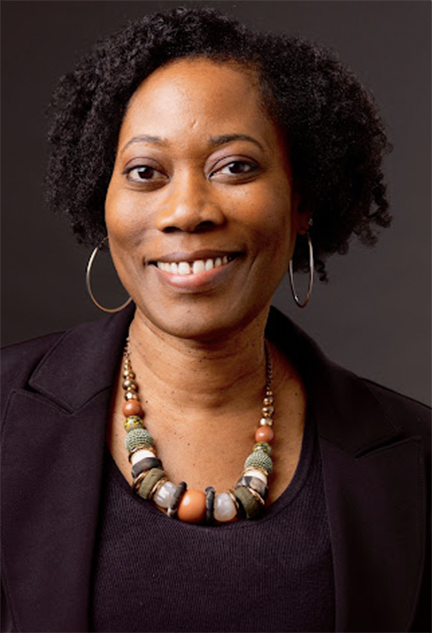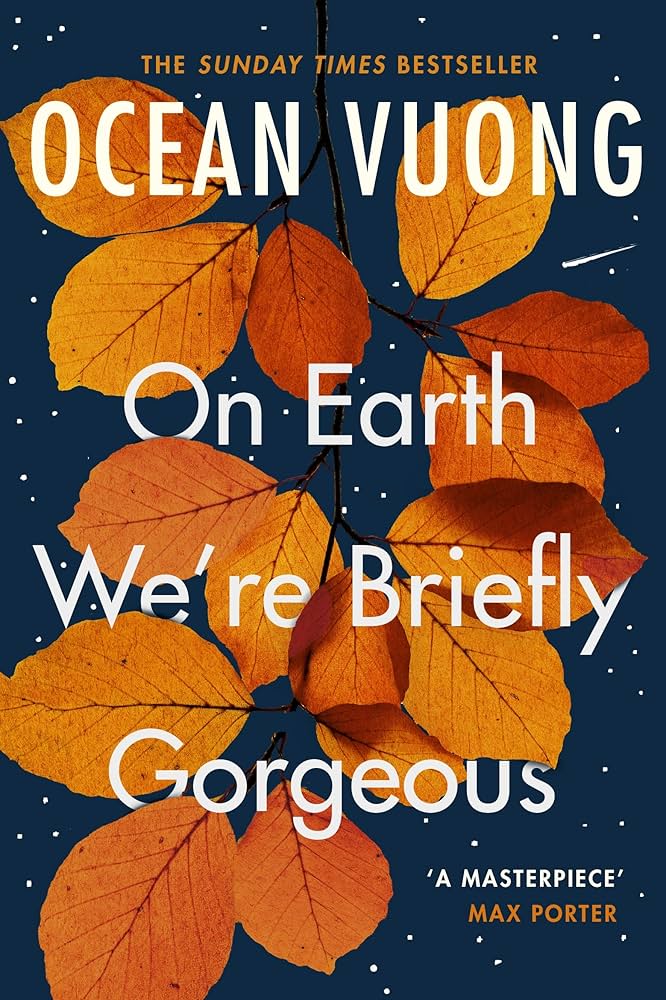Fall/Winter 2024
2
But, Is It True?
Renee Simms (Faculty)
But, Is It True?

Renee Simms
RWW Faculty
“The writer is hiding from herself,” the written feedback on my manuscript read. It was 9 a.m. on a Saturday. I began uncorking a bottle of wine.
I wasn’t hiding from myself, I thought, and what I’m writing is true.
But my draft was not reading as true. I was not conveying, in an authentic way, the story that was in my head.
The irony was I’d been thinking about what makes writing feel true. For weeks I’d been ranking applications for a writer’s conference and a fellowship. Each day I was reading dozens of fiction and nonfiction manuscripts. Most of the really good manuscripts were nonfiction. I mentioned this fact to Rick Barot late that summer. We were sitting across from each other at a table. “I’m reading more nonfiction that I find compelling,” I said. Rick nodded. “I agree,” he said.
“Why do you think that is?” I asked.
He said, “I think nonfiction has truth on its side.”
____
The essayist Barrie Jean Borich writes that she prefers the word “actual” to the word “truth” when describing creative nonfiction because, “Fiction writers insist that they, too, write the truth and that they must invent in order to tell this truth.” The poet Kimiko Hahn says, “When I’m teaching, I use the word ‘truth’ with a small ‘t’ to indicate facts, and a capital ‘T’ to indicate an emotional truth. The emotional Truth, if the poem is halfway decent, it’s gonna be there.”
I’m curious about emotional truth—I think. I’m also wary of the term. For one, there doesn’t seem to be a clear definition of what we mean by it, although I hear it all the time in writing workshops. One of us, and sometimes it’s me, will throw “emotional truth” into the fray and we’ll all nod as if we understand precisely what the speaker means. When I hear “emotional truth” I hear a nonspecific, generalized fuzzy feeling. And I’m less interested in emotion than I am in contradictions and paradox. The world is messy and beautiful. People are cruel and kind. We are born to eventually die. This is what seems True to me and what I’m thinking about. When I encounter writing that brilliantly captures this conundrum, I believe it. I don’t feel so alone.
“I’m curious about emotional truth—I think. I’m also wary of the term. For one, there doesn’t seem to be a clear definition of what we mean by it, although I hear it all the time in writing workshops.”
“You think your pain and your heartbreak are unprecedented in the history of the world,” James Baldwin writes, “but then you read. It was books that taught me that the things that tormented me most were the very things that connected me with all the people who were alive, who had ever been alive.”
____
Writing which feels true has certain features. It surrenders to a complex understanding of humanity. It offers an original way of seeing a subject. It feels autobiographical, based on personal experience, or at the very least deeply known and understood. And sections of the writing slow down for reflection and/or a consciousness that I come to trust—that I like—and which helps me make sense of the experience or story.
____
In The Art of the Novel, Milan Kundera writes, “The novel’s spirit is the spirit of complexity. Every novel says to the reader: ‘Things are not as simple as you think.’”
In Ocean Vuong’s On Earth We Are Briefly Gorgeous we are immersed in a consciousness that looks with clarity at the beauty and the mess in his life. It is a story about many things, including war and mental illness. Little Dog, the main character, is a son who is writing a letter to his mother, Rose. He’s reflecting on their relationship and his coming of age in a household where there is intergenerational trauma and violence.
The beginning of the novel recounts the violence Rose inflicts on Little Dog’s body as a child. “The first time you hit me, I must have been four. A hand, a flash, a reckoning.” A couple paragraphs later, the narrator says, “Then the time with the remote control. A bruised welt on my forearm …” Two paragraphs after that, “The time you threw the box of Legos at my head. The hardwood dotted with blood.” Notice the spare, lyrical language Little Dog uses to describe his mother’s cruelty. It’s paradoxical: that language can become a beautiful container to hold an ugly truth. Vuong expands on this idea that beauty and violence inhabit the same space by immediately following the last example with a memory of Rose tending to Little Dog. Immediately following “the hardwood dotted with blood,” we read this memory of Rose:
“Have you ever made a scene,” you said, filling in a
Thomas Kinkade house, “and then put yourself inside
it? Have you ever watched yourself from behind,
going further and deeper into that landscape,
away from you?”
____How could I tell you that what you were
describing was writing? How could I say that we,
after all, are so close, the shadows of our hands,
on two different pages, merging?
____“I’m sorry,” you said, bandaging the cut on
my forehead. “Grab your coat. I’ll get you McDonald’s.”
Head throbbing, I dipped chicken nuggets in ketchup
as you watched. “You have to get bigger and stronger,
okay?”
It’s not clear how much time elapses between the Legos incident and the conversation about a landscape. At the end of the day, it doesn’t matter. By stitching these events closely together, Vuong forces us to consider contradictory things: the beauty of droplets of blood on a hardwood floor; the cruelty of nostalgic landscape paintings; the false narratives we tell ourselves about our family. Where rage lands versus where it is held.

Renee Simms
Kundera writes that Don Quixote illustrates the novel’s complexity as a genre. According to Kundera, Cervantes creates “a world as ambiguity … as a welter of contradictory truths” and refuses “a moral position.”
I don’t believe novels need to sacrifice a moral position. But I do believe that a novel interested in truth should deal with the “world as ambiguity.” What Vuong’s novel made me sit with was how cruelty and love are linked experiences for Little Dog. By the end of the novel, I understood Rose’s nurturing of Little Dog as intertwined with her experiences with war. And Little Dog appreciated acts of pleasuring the body with Trevor, in part, because he knew how the body could be beaten and bloodied.
____
Like Vuong’s novel, Vievee Francis’s poem “Say It, Say It Any Way You Can” stitches together contradictory truths. In an essay about a 2011 conference where Francis read this poem, Hermine Pinson writes, “During the Q&A session, Francis said that she wrote the poem because ‘someone asked [her] to write a praise poem to James Brown, but James Brown was a wife beater … every time [she] tried to write it, [her] uncle came [to her] head.’”
Francis, like Vuong, refuses to disentangle the narrator’s global, local, and familial traumas. In her poem we’re given references to a social movement that ended with assassinations, including MLK’s death, which inspired Brown’s record, “Say it loud I’m black and I’m proud.” In the poem, Francis transforms the song to “Say it louder—/ I was proud,” the song lyric becoming the narrator’s feeling of racial pride, the integrity of her body and home, which get shattered by the end of the poem. The poem’s power is in the narrator’s weaving of singing and dancing with acts of misogyny and references to sharecropping and slavery: the “cotton,” “longhorns” and “this was Texas.”
The poem resonates because of the way contradictory truths are stitched together. Truths like a bone-handled pistol in a panty drawer that an aunt refuses to shoot in self-protection. Truths like purple hot pants worn by a girl living in a house of violent men.
Francis, like Vuong, presents us with a complicated truth.
____
If we consider for a moment that in writing her poem Vievee Francis might, at some point, have struggled with how to avoid easy clichés, the creation of the poem seems that much more miraculous.
Carmen Maria Machado had a similar challenge in writing her memoir In the Dream House about an abusive, queer relationship that Machado was in with another writer. She explains the challenge in writing this subject matter in a chapter titled “Queer Villainy.” She writes:
We deserve to have our wrongdoing represented as much
as our heroism, because when we refuse wrongdoing as a
possibility for a group of people, we refuse their humanity.
Machado responds to the challenge through the choices she makes with structure, genre, and point of view.
She rejects the features of traditional memoir. There are no long, introspective chapters told in linear time. She writes short chapters. She does not commit to realism. Instead she uses folktales as a motif to track how violence against women in folktales shows up in a domestic relationship between women writers:
In Hans Christian Andersen’s story, the Little
Mermaid has her tongue cut out of her head.. . . . . .
Sometimes your tongue is removed, sometimes you still
it of your own accord.
The memoir begins in first-person point of view but switches to second person to represent the loss of self.
And Machado uses speculative horror elements in the memoir. For example, she writes that the Dream House is “a real place,” “as real as this book.” However, a little later, she says of the house, “Here is what lines the driveway: all of the boys that you liked as a girl.” This is a creepy image, and obviously she does not mean it literally. But it is an effective way of representing the experiences that haunt this relationship.
What feels true about this memoir is the effort Machado makes to tell her story in a way that honors its unique contours and realities. It blurs the line between fact and fiction, queering the genre. Machado sees herself standing in a tradition of thinkers and intellectuals like Saidiya Hartman who advocate for critical fabulation when you have subject matter, like queer relationships, that are missing from the archives and collective storytelling.
____

Personal experience is important across genres.
Vuong often acknowledged the autobiographical nature of On Earth We Are Briefly Gorgeous. In an interview published in The Paris Review he said, “I wanted the book to be founded in truth but realized by the imagination. I wanted to begin as a historian and end as an artist. And I needed the novel to be a praxis toward that reckoning.” Philip Roth said, “You don’t necessarily, as a writer, have to abandon your biography completely to engage in an act of impersonation. It may be more intriguing when you don’t.” And James Baldwin said, “One writes out of one thing only—one’s own experience.”
The lesson here is to draw on what you know to add energy and believability. As Anne Sexton said in response to a question about why she wrote dark poems, “Pain engraves a deeper memory.” Our writerly obsessions are often linked to memories. It’s what compels us to write.
____
A character who reflects on a memory makes the storytelling feel true. It allows us to be present as the narrator or character is processing what happened. It offers a reprieve from the action. And it’s how we engage listeners to the stories we tell in real life. In the middle of telling a tale, we punctuate our stories with reflections like “So I’m thinking as I’m driving …”
An example of a short story that makes good use of reflection is “The Point” by Charles D’Ambrosio. The story is told in past tense by Kurt, who is reflecting on the period of his life when, at age 13, he had to escort drunken adults home after his mother’s parties. The action of the story, which happened in the past, involves 13-year-old Kurt walking a drunken neighbor, Mrs. Gurney, to her home. The action has all of the carefully observed details that immerse us in the dreamworld and make it feel as if it’s true. We hear the sounds of the party, the clinking of glasses and laughter. We see a blade of light that pierces Kurt’s darkened room when his mother enters to ask if he’ll walk Mrs. Gurney home. We smell the Lily of the Valley perfume his mother wears and the lemon rind she is chewing from her vodka tonic.
But the strength of the story is the narrator’s reflection that intermittently interrupts the story about walking Mrs. Gurney home. The reflections are about Kurt’s father and by the end they help us understand why Kurt’s even remembering these events from long ago. The first reflection happens right after the mother comes into his room and asks that he take Mrs. Gurney home. He states, “When Father was alive, she rarely drank, but after he shot himself you can say she really let herself go.” The reflections build from there, and by the end we completely understand Kurt, the horrors he’s witnessed and why, as a kid, he is a caretaker of adults. The reflections are, as Vladimir Nabokov said about Chekhov’s work, “told in the most natural way possible … in the way one person relates to another the most important things in his life.”
___
I believe in the end that literary language will save us. We will not be saved by disinformation. Or propaganda. Or artificial intelligence, which, as Arundhati Roy said, “we are told can write masterpieces.” What AI cannot do is get busted in the head, then remember that pain in order to give others hope.
Dig into your deeper memories engraved by pain and make art of it. Tell things as they are. Find friends who will write you feedback that says, “You are hiding from yourself”; who will tell you not to get drunk in the morning; friends who will remind you that alcohol is a drug for forgetting, and that what we need is for you to remember.
And then say it. Say it loud.
Renee Simms' writing has appeared in Salon, Guernica, Oxford American, The Southwest Review, The Los Angeles Times, and elsewhere. Her debut story collection Meet Behind Mars (Wayne State University Press) was a Foreword Indies finalist for Short Stories, featured on NPR and the National Book Critics Circle blog, and was listed by The Root as one of 28 brilliant books by Black authors in 2018. She has a memoir and a novel forthcoming with Farrar Straus and Giroux. Renee teaches in the low-residency MFA program at Pacific Lutheran University and is an Associate Professor of African American Studies at University of Puget Sound.
